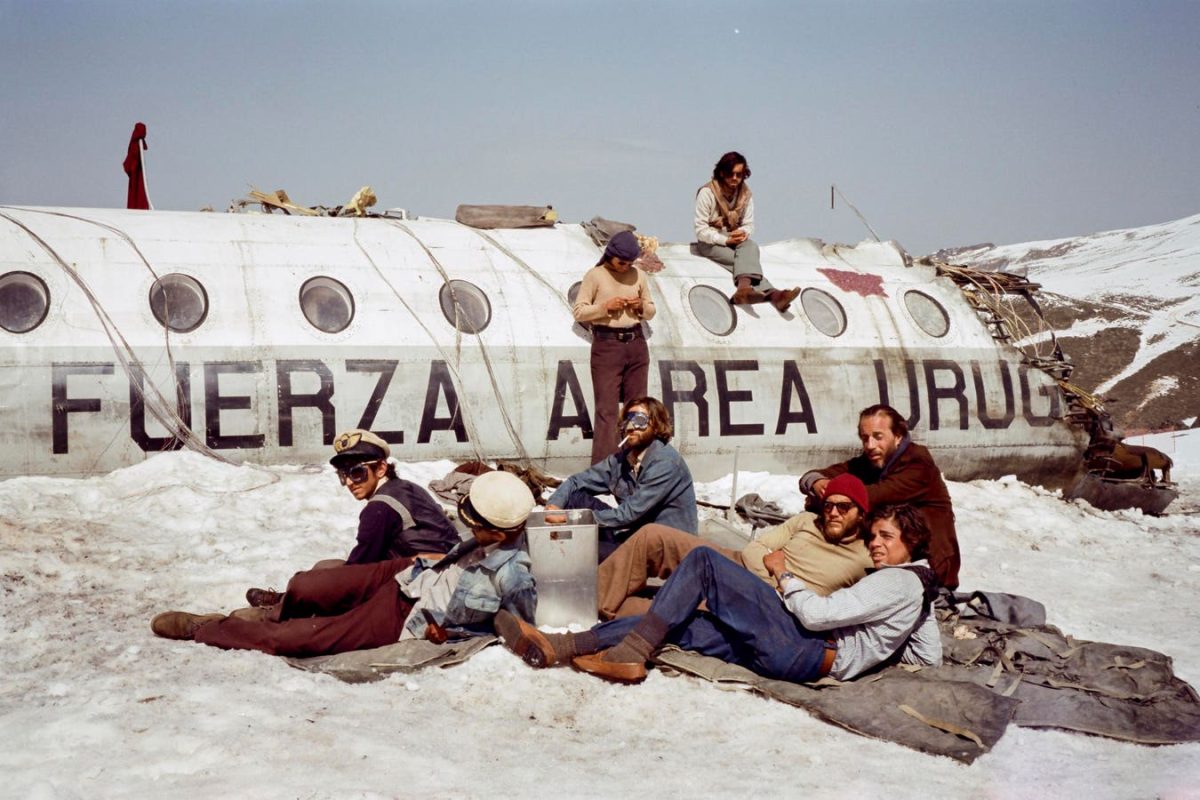Society of the Snow by J.A. Bayona is a gripping tale of the 1972 Andes plane disaster, delving into hopelessness, resilience, and moral ambiguity. Bayona’s meticulous narrative endures, inspiring hope amid tragedy.
Going into the depths of “Society of the Snow” in this review, examining its narrative strength, visual beauty, and thematic resonance. We learn through interviews and analysis how well the movie conveys the spirit of the Andes tragedy while providing new perspectives on human nature. In Bayona’s film, we travel to both the heights of human sorrow and snow-capped peaks, challenging viewers to examine their weaknesses and fortitude in the face of hardship.
“The overall tone of ‘The Snow Society’ is incredibly somber yet remarkably poignant. It truly captured the solemnity of the Andes plane crash.” Samuel Lopez, Grade 11 student said.
Viewers travel to the heart of the Andes highlands, where the razor-thin boundary between life and death is strongly defined by Bayona’s masterful direction and Pedro Luque’s photography. The film vividly recreates the terrifying crash with great detail, enveloping viewers in the turmoil and pure fear of the survivors’ suffering. Every scene evokes a sense of dread, establishing the tone for the terrifying events unfolding. As the survivors struggle with hopelessness and desperation, their fight to survive becomes a monument to the human spirit’s tenacity, a glimmer of hope amid the shadows.
“The filmmakers did a commendable job portraying the emotional rollercoaster experienced by the survivors in ‘The Snow Society.’ From fear to hope and ultimately to despair, their journey was palpable,” Mateo Villegas, Grade 11 student said.
A highly captivating feature of the movie is its examination of ethical difficulties when confronted with life-threatening circumstances. The survivors are forced to face their deepest fears and moral convictions as they face the possibility of famine and cannibalism. With skillful handling of these intricate subjects, Bayona invites viewers to reflect on their moral compass and identify with the characters’ difficult decisions. The movie challenges viewers to consider the nature of human resilience and the bounds of moral behavior under the worst of situations through nuanced performances and subtle character development.
“The balance between hope and despair in ‘The Snow Society’ was delicately portrayed, capturing the fluctuating emotions of the survivors as they clung to the possibility of rescue amidst the bleakness of their situation,” Mateo Villegas, Grade 11 student said.
“Society of the Snow” is underpinned by strong performances that give its characters life in addition to its rich thematic depth. Each actor imbues their character with a sense of reality, from the quiet resilience of the people to the stoic determination of the leaders, thereby establishing the emotional authenticity of the picture. We are reminded of the human spirit’s eternal strength in the face of unfathomable adversity as we watch their struggles and victories. The movie goes beyond its original content through its performances to present a moving and challenging look at the human condition.
“Watching ‘The Snow Society’ profoundly impacted my perspective on the Andes plane crash and the resilience of the survivors. It left me with a newfound appreciation for the strength of the human spirit in the face of adversity,” Samuel Lopez, Grade 11 student said.
In conclusion, “Society of the Snow” stands as a powerful testament to the resilience of the human spirit and the enduring power of hope in the darkest of times. The film transcends its original material to create a moving and fascinating cinematic experience that remains long after it ends thanks to its captivating story, stunning graphics, and excellent performances. The audience is reminded of the strength and compassion that everyone owns, even in the most catastrophic situations.



